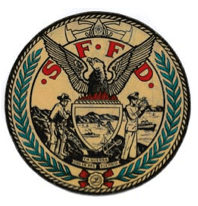 On June 2, 2011, the San Francisco Fire Department suffered the tragic loss of 2 firefighters at 133 Berkeley Way. The department conducted an internal review of the incident and issued a 156-page report on their findings. Many of the lessons relate to situational awareness and it is from that perspective that I would like to share my assessment on several of their findings.
On June 2, 2011, the San Francisco Fire Department suffered the tragic loss of 2 firefighters at 133 Berkeley Way. The department conducted an internal review of the incident and issued a 156-page report on their findings. Many of the lessons relate to situational awareness and it is from that perspective that I would like to share my assessment on several of their findings.
I dedicate this article to the lives of Lieutenant Vincent Perez and firefighter/paramedic Anthony M. Valerio and I applaud the San Francisco Fire Department for conducting an internal review and for sharing their findings with the fire service so we may all learn from tragedy.
I am NOT a Monday morning quarterback. In fact, I have great distain for those who choose to judge the performance of others after the fact and make derogatory statements about the performance of personnel at the incident and what they should have or could have done.
I have written over 90 articles on this website that support the advice I am going to offer here. Thus, I can say, with confidence, my advice is not specific to SFFD and this incident. Rather, the advice is generic and can be applied broadly across all emergency services organizations.
There are 25 recommendations contained in the report. For the sake of brevity, I will only address the first 5 here. The format I am going to use for this review is to list the recommendation, followed by the circumstances that gave rise to the recommendation (if they provided it) followed by my advice for improving situational awareness. I hope you find this format helpful.
Here is a link to the report which I recommend reading. It is always a best practice to obtain a complete depiction of an incident versus bits and pieces.
http://www.sf-fire.org/modules/showdocument.aspx?documentid=2646
Report recommendation #1: Incident Commanders should ensure that when a Company (and/or) personnel has not responded to several radio attempts, immediate steps shall be taken to deploy resources to locate the Company/personnel.
Engine 26 was called via radio multiple times with no response. At one time, the Incident Commander thought Engine 26 responded, however this could not be verified. The Safety Investigation Team, after carefully reviewing audio tapes, discovered that it was Battalion 6 looking for Engine 26.
ICS Manual Section 2‐6: Should a situation occur where a later arriving Company or Chief Officer cannot locate or communicate with Command (after several radio attempts), they will assume and announce their assumption of Command and initiate whatever actions are necessary to confirm the safety of the missing crew.
Chief Gasaway’s Advice:
 Accountability is foundational to situational awareness. Knowing your crew size, quality, location, actions and progress at all times is important to developing and maintaining command situational awareness.
Accountability is foundational to situational awareness. Knowing your crew size, quality, location, actions and progress at all times is important to developing and maintaining command situational awareness.
If a crew cannot be reached by radio, the assumption should be the crew is in trouble. The commander should avoid assumptions that may include the crew didn’t hear the radio or the crew was too busy to reply to the radio call, or the crew’s radio isn’t working properly. The more the latter list of reasons are assumed multiple times and fires when radio traffic goes unanswered, the more it may be assumed one of these explanations is why a company cannot be reached while the circumstances are dire.
To develop and maintain command-level situational awareness, the person in-charge should be in a fixed location, hands-off from task duties and located remotely enough to see the big picture clues and cues. A company officer or chief officer involved in task-level activities can develop and maintain task-level situational awareness, but cannot develop and maintain incident-wide situational awareness.
Report recommendation #2: The Incident Support Specialist shall initiate an Incident Command Worksheet immediately and begin the tracking of all resources. An accurately completed fireground Incident Command Worksheet should assist in the transfer of Command.
The Investigation found that the initial Incident Support Specialist’s Incident Command Worksheet did not have the location and assignments of all assigned resources.
Chief Gasaway’s Advice
 An incident worksheet plays a critical role in developing and maintaining situational awareness. Specifically, the worksheet helps manage memory and memory is extremely fragile under stress. The amount of information that can be taken in, processed and recalled is very limited (and decreases as a result of stress). Writing important information down helps the commander manage and have ready access it.
An incident worksheet plays a critical role in developing and maintaining situational awareness. Specifically, the worksheet helps manage memory and memory is extremely fragile under stress. The amount of information that can be taken in, processed and recalled is very limited (and decreases as a result of stress). Writing important information down helps the commander manage and have ready access it.
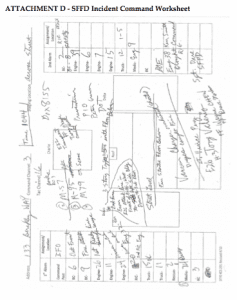 If the information is not written down, it can be extremely challenging for the commander (or the aide) to reconstruct it later as the incident becomes more complex and more stressful. This fact was validated during my research on situational awareness where numerous commanders told me if they did not use the worksheets right from the beginning, they fell behind and never got caught back up.
If the information is not written down, it can be extremely challenging for the commander (or the aide) to reconstruct it later as the incident becomes more complex and more stressful. This fact was validated during my research on situational awareness where numerous commanders told me if they did not use the worksheets right from the beginning, they fell behind and never got caught back up.
Look at how your department uses worksheets now to help manage information. If you have worksheets but do not regularly use them, you may be vulnerable to the same situation. If you only use worksheets for the big incidents, you may also be vulnerable when incidents start small and then progress into big incidents.
Report recommendation #3: All Companies operating on the incident scene must keep the Incident Commander updated when changing from one location to another. The ISS tracking resources on the SFFD Incident Command Worksheet must ensure this information is documented (i.e. Engine 65 moving from second floor up to third floor).
Battalion 9 (Fire Attack) changed point of entry for Fire Attack from Interior stairs to making entry from Bravo Side. This was not reflected on the Incident Command Worksheet.
Chief Gasaway’s Advice
 Personnel operating in a dynamic environment can overlook the critical importance of communicating their location to command or an accountability officer. When crews routinely move freely about inside an IDLH environment (especially floor-to-floor) without informing command of their movements the crews are putting themselves in jeopardy of command being unable to mobilize rescue personnel in a timely fashion if something goes wrong.
Personnel operating in a dynamic environment can overlook the critical importance of communicating their location to command or an accountability officer. When crews routinely move freely about inside an IDLH environment (especially floor-to-floor) without informing command of their movements the crews are putting themselves in jeopardy of command being unable to mobilize rescue personnel in a timely fashion if something goes wrong.
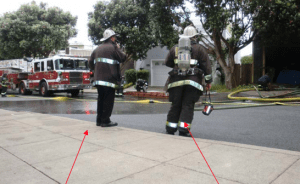 So long as incidents remain small and uncomplicated, this kind of tracking will seem like overkill and will be subject to criticism by personnel who dismiss the value of tracking their location when they don’t appear to be in jeopardy’s way.
So long as incidents remain small and uncomplicated, this kind of tracking will seem like overkill and will be subject to criticism by personnel who dismiss the value of tracking their location when they don’t appear to be in jeopardy’s way.
Look at how your organization tracks personnel movement inside all IDLH environments. It is a best practice to ensure accountability (to include crew size, location, task and progress) at all times. If this is only done at large incidents, then there is a risk it will not be done at an incident that starts small and progresses in complexity.
Recommendation #4: The Incident Commander should use all available resources to increase his/her situational awareness during an incident.
The Safety Investigation Team found that the Incident Commanders were presented with significant challenges in gaining critical information, such as the building layout, and location/extent of fire. The Incident Commanders made several attempts to acquire this information by contacting the building occupant, as well as attempting to contact the Companies operating at the scene. The use of all available resources, including Incident Support Specialists if available, should assist in the gathering of information to increase situational awareness.
Chief Gasaway’s Advice
 Geography played a roll in limiting the commanders ability to complete a thorough size-up. A structure built on a steep hillside is going to limit the ability to complete a 360 degree size up. This hampers situational awareness because the first step in developing SA is to capture clues and cues (perception of the environment). If the clues and cues cannot be captured, the second level of SA is likely to be flawed (comprehending the situation). This, in turn, is likely to flaw the third level of SA (predicting the future).
Geography played a roll in limiting the commanders ability to complete a thorough size-up. A structure built on a steep hillside is going to limit the ability to complete a 360 degree size up. This hampers situational awareness because the first step in developing SA is to capture clues and cues (perception of the environment). If the clues and cues cannot be captured, the second level of SA is likely to be flawed (comprehending the situation). This, in turn, is likely to flaw the third level of SA (predicting the future).
The recommendation to use support resources to gather information is important. Gathering information from the occupant can also be beneficial but my experience has shown the reliability of their information is limited because of the stress they are under. The Google map on page 20 of the report appears to indicate an unobstructed view of Side C of the incident may have been possible from Berkeley Way.
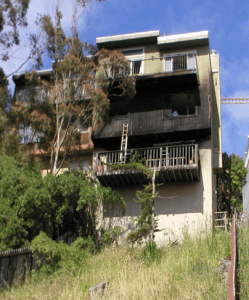 Absent the availability of quality information, the commander is left with no choice but to assume certain data based on what clues and cues are present (and absent), supported by training and past experience. The problem is assumptions can be wrong and the consequences can be significant. Better to validate assumptions (and intuition) with facts.
Absent the availability of quality information, the commander is left with no choice but to assume certain data based on what clues and cues are present (and absent), supported by training and past experience. The problem is assumptions can be wrong and the consequences can be significant. Better to validate assumptions (and intuition) with facts.
Recommendation #5: Crews on the fireground should update the Incident Commander when they are unable to complete an assignment due to a change in conditions/events.
Engine 24 and Rescue Squad 1 were unable to make entry through the garage due to extreme heat and smoke conditions. While the Incident Commander was able to see Engine 24 and Rescue 1 exiting from the garage, the Incident Commander was never informed of the conditions that prevented Engine 24 and Rescue 1 from entering the house through the garage.
ICS Manual Section 3‐9: Command must be advised immediately of significant changes, particularly those involving the ability or inability to complete an objective, hazardous conditions, accidents, structural collapse, etc.
Chief Gasaway’s Advice
 The lack of updates and progress reports is one of the barriers to situational awareness I speak about in my Fifty Ways to Kill a First Responder program. What I found out during my research into near-miss and casualty reports, supported by my interviews with first responders is: Progress and update reports are not always provided, even when sharing the information could be critical to developing and maintaining the situational awareness of the commander.
The lack of updates and progress reports is one of the barriers to situational awareness I speak about in my Fifty Ways to Kill a First Responder program. What I found out during my research into near-miss and casualty reports, supported by my interviews with first responders is: Progress and update reports are not always provided, even when sharing the information could be critical to developing and maintaining the situational awareness of the commander.
When I asked interior crews why they did not report the deteriorating conditions, astoundingly they stated: If the conditions are that bad on the inside, then the commander should be able to see it from the outside. Personnel who operate predominately inside IDLH environments have little frame of reference about how things look on the outside (because they’re always inside). This leads to a flawed assumption.
If an interior crew reports deteriorating conditions on the inside and the commander sees a situation that does not look bad from the outside, this information should fly a big red flag for the commander. It cannot be assumed from either position (inside or outside) that the personnel can infer the conditions encountered. They must be communicated.
When an interior crew exits the building because of deteriorating conditions and does not report those conditions to command because it is assumed the commander knows why the crew came out, the crew and the commander do not have shared situational awareness (although each may think they do).
The mission of Situational Awareness Matters is simple: Help first responders see the bad things coming… in time to change the outcome.
Safety begins with SA!
_________________________________________________________________________________
Share your comments on this article in the “Leave a Reply” box below. If you want to send me incident pictures, videos or have an idea you’d like me to research and write about, contact me. I really enjoy getting feedback and supportive messages from fellow first responders. It gives me the energy to work harder for you.
Thanks,
Email: Support@RichGasaway.com
Phone: 612-548-4424
Facebook: www.facebook.com/RichGasaway
Facebook Fan Page: www.facebook.com/SAMatters
LinkedIn: Rich Gasaway
Twitter: @RichGasaway
Twitter: @SAMatters
YouTube: RichGasaway1
YouTube: SAMattersTV
iTunes: SAMatters

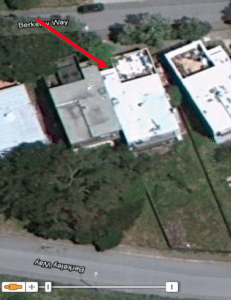

My heart goes out to the firefighters, their families and their co-workers, but what an opportunity to re-emphasize the critical importance on situational awareness on the fireground, and to remphasize the role and responsibilities of the IC. I like to think that all of us who represent the fire service are finally realizing, and putting into practice, the control and ability we have in preventing firefighter LODD’s. I hope we 1) have ‘turned the corner’ on seatbelt use and safe driving and scene control; 2) are beginning to understand and appreciate the advantages of maintaining good cardiovascular health; and, 3) look for ways to more efficiently control our resources, particularly our human resources, on the fireground, which you effectively adddress in this posting. Stay safe brother.
I am a Communications Lt on a Volunteer Search and Rescue team (MIDSAR – Lancaster County PA, 94), a Computer Network Specialist in a Network Operations Center (NOC) and a local School Board member. To some it would seem that Captain Gassaway’s training sessions would be far from relevant to me. Wrong. Dead wrong and I am seeing more and more that how it applies in all of these and other settings as I wear several other hats. As a SAR Communications officer, I can say, it is very relevant in that environment.
Just yesterday in the relatively safe environment of the NOC we had an incident. Information was coming in from multiple sources and there were multiple requests for direction and information. The other “senior” in the group had taken the lead, I outrank him but he took the call, he was in effect IC. I was filling the role of “staff”, listening to him, keeping track of the items for him, making sure he did not miss critical inputs, important checks, etc. I do not know the fireground but if what you are teaching is half as relevant there, and I have no doubt it is more so, we collectively need to listen. For those like me who wear multiple hats, take note, even if you are not “fireground.” Sure lives were not at stake in the NOC setting but practicing skills in any setting may save a life somewhere else.
Thanks Chief…